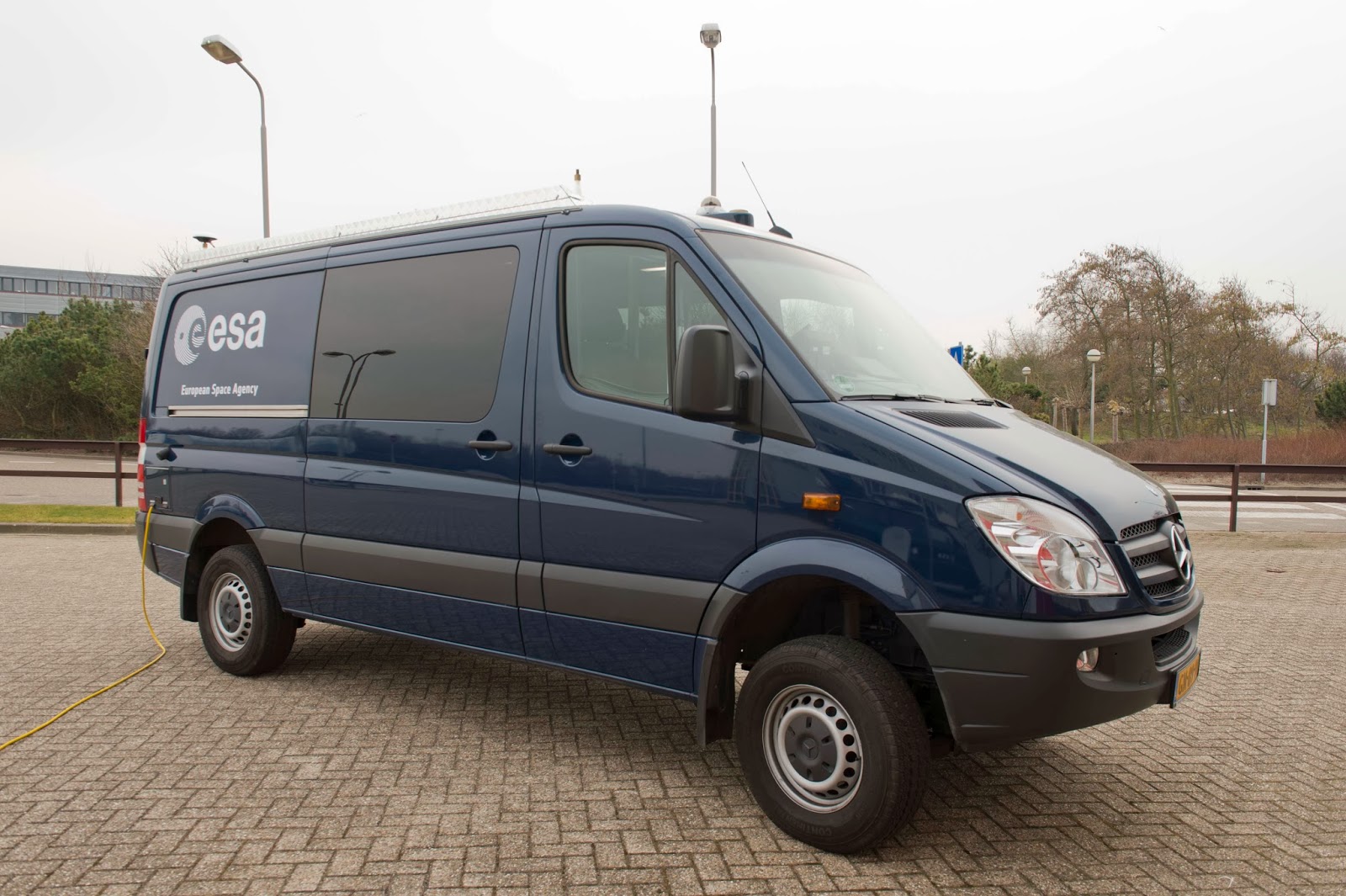ESA - Galileo Constellation logo.
10 February 2014
The in-orbit validation of Galileo has been achieved: Europe now has the operational nucleus of its own satellite navigation constellation in place – the world’s first civil-owned and operated satnav system.
In 2011 and 2012 the first four satellites were launched into orbit. Four is the minimum number needed to perform navigation fixes.
In the following year, these satellites were combined with a growing global ground infrastructure to allow the project to undergo its crucial In-Orbit Validation phase: IOV.
Four-satellite constellation
“IOV was required to demonstrate that the future performance that we want to meet when the system is deployed is effectively reachable,” says Sylvain Loddo, ESA’s Galileo Ground Segment Manager.
“It was an intermediate step with a reduced part of the system to effectively give evidence that we are on track.”
On 12 March 2013, Galileo’s space and ground infrastructure came together for the very first time to perform the historic first determination of a ground location, taking place at ESA’s Navigation Laboratory in the ESTEC technical centre, in Noordwijk, the Netherlands.
From this point, generation of navigation messages enabled full testing of the entire Galileo system. A wide variety of tests followed, carried out all across Europe.
Galileo Validated video
“ESA and our industrial partners had teams deployed in the field continuously for test operations,” adds Marco Falcone, ESA’s Galileo System Manager.
“More than 10 000 km were driven by test vehicles in the process of picking up signals, along with pedestrian and fixed receiver testing. Many terabytes of IOV data were gathered in all.”
Test results
The single most important finding from the test results? Galileo works, and it works well. The entire self-sufficient system has been shown as capable of performing positioning fixes across the planet.
Galileo’s observed dual-frequency positioning accuracy is an average 8 m horizontal and 9 m vertical, 95% of the time. Its average timing accuracy is 10 billionths of a second – and its performance is set to sharpen as more satellites are launched and ground stations come on line.
Galileo positioning performance
For Galileo’s search and rescue function – operating as part of the existing international Cospas–Sarsat programme – 77% simulated distress locations can be pinpointed within 2 km, and 95% within 5 km.
All alerts are detected and forwarded to the Mission Control Centre within a minute and a half, compared to a design requirement of 10 minutes.
“Europe has proven with IOV that in terms of performance we are at a par with the best international systems of navigation in the world,” comments Didier Faivre, ESA Director of Galileo and Navigation-related Activities.
Next steps
Following this success, the build-up of the Galileo system can proceed to placing the remaining satellites into orbit and deploying further ground stations.
More than 10 000 km were driven during testing
The next two Galileo ‘Full Operational Capability’ satellites are currently at ESTEC, completing their testing to be cleared for flight.
Over the course of 2014, six more satellites are planned to join the existing four in three separate Soyuz launches. Galileo’s initial services are scheduled to start by the end of this year.
Galileo partners
The definition phase and the development and IOV phase of the Galileo programme were carried out by the ESA and co-funded by ESA and the European Commission.
Galileo inspection
The Full Operational Capability phase of the Galileo programme is managed and fully funded by the European Commission. The Commission and ESA have signed a delegation agreement by which ESA acts as design and procurement agent on behalf of the Commission.
More about:
Galileo fixes Europe's position in history: http://www.esa.int/Our_Activities/Navigation/Galileo_fixes_Europe_s_position_in_history
European ground stations enable Galileo search and rescue testing: http://www.esa.int/Our_Activities/Navigation/European_ground_stations_enable_Galileo_search_and_rescue_testing
Galileo achieves its first airborne tracking: http://www.esa.int/Our_Activities/Navigation/Galileo_achieves_its_first_airborne_tracking
How satellite navigation works: http://www.esa.int/Our_Activities/Navigation/The_future_-_Galileo/Galileo_IOV_Launch/How_satellite_navigation_works
Galileo on the ground: http://www.esa.int/Our_Activities/Navigation/The_future_-_Galileo/Galileo_IOV_Launch/Galileo_on_the_ground
Radio Navigation Laboratory: http://www.esa.int/Our_Activities/Navigation/ESA_Navigation_Development_Facilities_supports_new_projects
EC Galileo website: http://ec.europa.eu/enterprise/policies/satnav/galileo/index_en.htm
Images, Video, Text, Credits: ESA / P. Carril / Anneke Le Floc'h.
Best regards, Orbiter.ch





